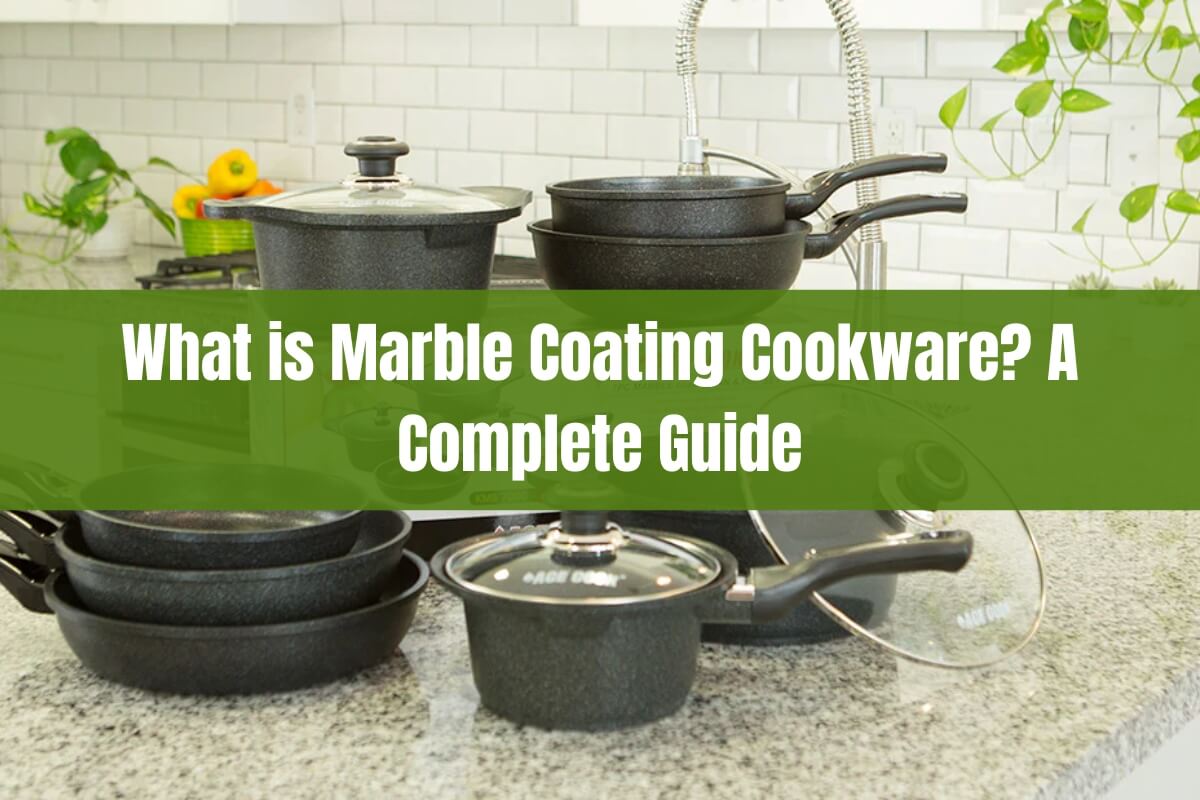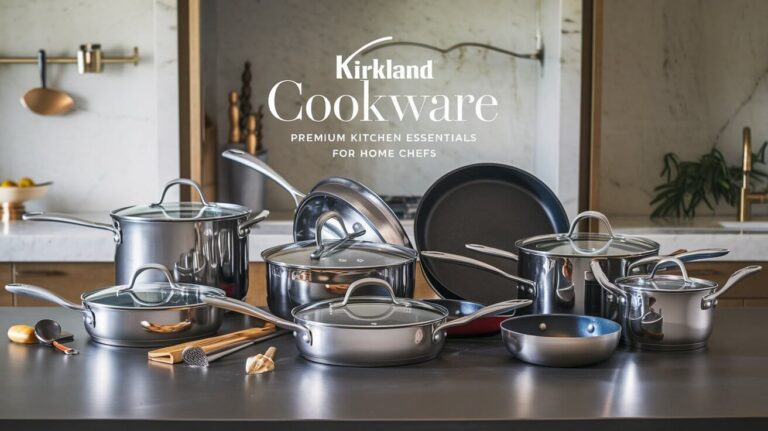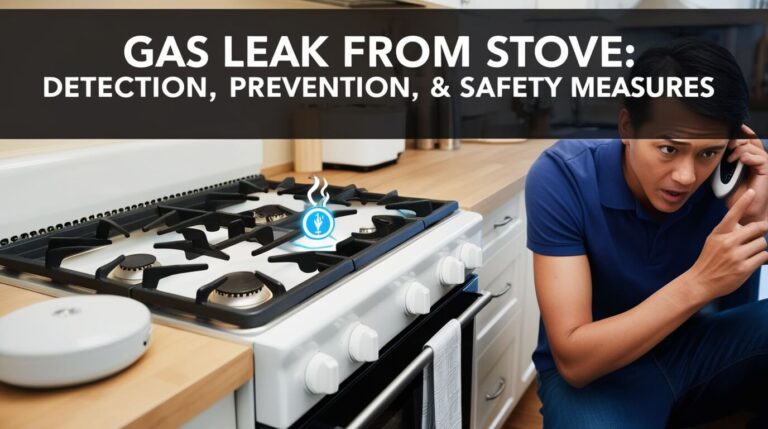
Over the past few years, a new type of cookware has been gaining popularity – marble coating cookware. As health-conscious consumers seek safer alternatives to traditional non-stick pans, marble coated pots and pans are becoming a trendy option. But what exactly is marble coating cookware? Marble coated cookware features a natural non-stick cooking surface made from finely ground marble stone particles fused onto metal cookware like aluminum or stainless steel.
In this comprehensive guide, we’ll explore what makes marble coating unique, how it’s manufactured, its pros and cons compared to other non-stick surfaces, and whether marble cookware is truly a safe choice for your kitchen. We’ll also provide tips on using and caring for these specialty pots and pans. By the end, you’ll have all the facts to decide if investing in marble coated cookware is right for you.
What is Marble Coating Cookware?
Marble coating cookware refers to pots and pans that have an exterior coating made from pulverized marble stone. This marble powder coating creates a unique textured, speckled surface that resembles natural stone in appearance.
The base of these pans is typically made from aluminum or another metal that conducts heat well. During manufacturing, this inner core is coated with the marble particle mixture and baked at extremely high temperatures to permanently fuse the marble coating.
This marble stone coating provides a naturally non-stick cooking surface, similar to traditional Teflon or ceramic non-stick pans. However, unlike synthetic coatings, the marble material is 100% natural and contains no toxic chemicals like PFOA or PFAS.
How is Marble Coated Cookware Made?
The process of making marble coated cookware involves combining quality metal materials with marble stone particles in a multi-step process:
- Interior Core: The base is formed from cast aluminum or another conductive metal like stainless steel. This interior core provides even heat distribution.
- Marble Coating Mixture: Marble stone is finely pulverized into a powder. This marble dust is mixed with other mineral-based binding agents to create the exterior coating.
- Coating Application: The marble coating mixture is applied to the exterior of the metal core using specialized equipment to ensure an even, consistent layer.
- High-Heat Curing: The coated cookware is then baked at extremely high temperatures, often over 1000°F. This high-heat curing process allows the marble coating to permanently fuse and vitrify onto the metal base.
- Final Touches: Once cooled, the marble coated cookware receives any final polishing, quality checks, and branding before packaging.
This labor-intensive process requires specialized equipment and high-heat kilns. While it results in an ultra-durable, attractive non-stick cooking surface, it also makes marble coated cookware more expensive than traditional non-stick pans.
Benefits of Using Marble Cookware
So what advantages does marble offer over other non-stick cookware coatings? There are several key benefits that make marble a desirable material for pots and pans:
Natural Non-Stick Surface
The most obvious benefit of marble cookware is its natural non-stick properties. The textured stone surface prevents foods from sticking and baking on, even when little or no oil is used. Eggs, fish, and other delicate items can be cooked with ease and very little residue left behind.
This non-stick quality also makes marble cookware extremely easy to clean. A quick rinse or wipe is often all it takes with no laborious soaking or scrubbing required.
Even Heat Distribution
In addition to being non-stick, marble is also an excellent heat conductor thanks to its dense stone composition. The metal core combined with the marble coating allows heat to be distributed evenly across the entire cooking surface.
This even heat distribution prevents hot spots that can lead to burning or uneven cooking. It allows for more precise temperature control while cooking.
Durable and Scratch-Resistant
One of the biggest advantages of marble coating is its impressive durability and longevity. The marble stone particles vitrify into an ultra-hard surface that is 10 times more scratch-resistant and longer lasting than traditional non-stick coatings.
This durable marble finish can withstand the use of metal utensils without scratching, chipping or flaking off over time like Teflon or ceramic pans often do. With proper care, a quality marble coated pan can last for decades.
Free of Toxic Chemicals
Unlike Teflon pans which contain controversial chemicals like PFOA, marble cookware is made from 100% natural materials. There are no synthetic coatings or hazardous substances used in the manufacturing process.
The non-porous marble stone surface is also less likely to absorb flavors, odors or bacteria compared to other non-stick finishes. This makes marble a safer, more hygienic option for health-conscious cooks.
While marble coated cookware has many advantages, there are also some important drawbacks and care considerations to be aware of, which we’ll cover next.
Is Marble Coating Cookware Safe?
One of the biggest selling points of marble cookware is its positioning as a safe, non-toxic alternative to traditional non-stick pans using Teflon or similar synthetic coatings. But just how safe is marble coating for your health? Let’s take a closer look:
Safety of the Materials
The key material used in marble coated cookware is, as the name implies, actual marble stone. Marble is a 100% natural calcium-based stone material that’s been used for centuries with no known health risks.
During the manufacturing process, the only materials added are other mineral-based binding agents that allow the marble particles to adhere to the metal core. No synthetic polymers, dyes or other potentially toxic chemicals are used to create the marble coating.
The non-porous stone surface is also less prone to absorbing contaminants or harboring bacteria compared to some non-stick materials. From the raw materials themselves, marble cookware appears to be an incredibly safe option.
Heat Resistance and Toxicity
One of the biggest concerns with traditional Teflon non-stick coatings is their potential to release toxic fumes and particulates when overheated past 500°F. This can cause serious health issues like polymer flu.
In contrast, marble stone is incredibly heat resistant and can withstand oven temperatures up to 800°F with no risk of releasing any harmful vapors or gases. The curing process permanently fuses the marble to the pan’s surface.
As long as marble cookware is used properly and not subjected to extreme temperature changes, there’s no danger of toxic fumes or materials being released during normal cooking use.
Proper Usage and Care
While the marble coating itself is inert and non-toxic, there are still some care guidelines to follow:
- Avoid Oven Use: Marble coated pans are not meant for oven use and should only be used on the stovetop.
- Prevent Rapid Temperature Changes: Going from extremely hot to cold temperatures quickly can cause thermal shock cracks or damage to the marble coating over time.
- Use Non-Abrasive Utensils and Cleaners: While highly scratch-resistant, the marble finish can still be damaged by abrasive scrubbing pads or cleaners. Stick to non-scratch sponges and mild dish soap.
Following the manufacturer’s use and care instructions is important to prevent any degradation or damage to the marble coating that could potentially cause materials to flake off into foods over time.
Overall, when used as intended, all available evidence indicates marble coating cookware is an incredibly safe, non-toxic option for home cooks. It eliminates many of the health concerns surrounding traditional Teflon pans while providing exceptional non-stick performance.
Comparing Marble to Other Non-Stick Coatings
Now that we understand what marble cookware is and its safety factors, how does it actually stack up against other popular non-stick coatings on the market? Let’s compare marble to the two most common alternatives – Teflon and ceramic:
Marble vs. Teflon Non-Stick
Teflon, or polytetrafluoroethylene (PTFE), has been the reigning non-stick coating for cookware for decades. While incredibly effective at preventing foods from sticking, Teflon does have some drawbacks:
- Potential Toxicity: When heated above 500°F, Teflon can release toxic fumes linked to serious health issues. This rules out using Teflon pans for high-heat cooking methods like searing.
- Limited Lifespan: With use, the Teflon coating will inevitably begin to flake, scratch and degrade over time, especially if metal utensils are used. Pans require frequent replacement.
- Environmental Concerns: The chemicals used to produce Teflon coatings, like PFOA, have been linked to environmental contamination and ecological damage.
Marble coatings avoid all of these pitfalls of traditional Teflon. The all-natural stone composition can withstand much higher temperatures with no risk of toxic fumes. The ultra-hard vitrified marble surface is also far more resistant to scratches, scuffs or flaking to provide longer-lasting non-stick performance.
From a health and ecological standpoint, marble cookware is definitely the safer choice over Teflon pans. The only potential downside is that high-quality marble coated pans tend to be more expensive upfront than Teflon sets.
Marble vs. Ceramic Non-Stick
More recently, ceramic non-stick cookware has gained popularity as an alternative to Teflon. While ceramic coatings are made from natural mineral compounds, there are some key differences from marble:
- Heat Limitations: Most ceramic coatings cannot withstand temperatures above 600°F before beginning to degrade or crack. This rules them out for high-heat cooking methods.
- Less Durability: Ceramic surfaces are more prone to chipping, scratching or staining compared to vitrified marble’s robust finish.
- Shorter Lifespan: Even with proper care, ceramic pans tend to lose their non-stick capabilities after just 1-2 years of regular use as the coating wears down.
- Reactivity Concerns: There are some concerns that ceramic coatings may react with acidic foods like tomatoes or vinegars if the glaze is compromised.
Marble offers superior heat resistance and much better longevity compared to ceramic non-stick alternatives. The only potential downside is that marble pots and pans tend to be heavier than lightweight ceramic cookware.
For high-performance non-stick cooking and lasting durability, marble is simply the superior choice over ceramic coatings based on the material properties.
Overall, marble’s natural stone construction provides the best of both worlds – exceptional non-stick food release without the potential health or ecological hazards of traditional Teflon pans. When you factor in marble’s impressive heat resistance and longevity, it’s not hard to see why marble coated cookware is an appealing option for health-conscious cooks.
Using and Caring for Marble Cookware
If you do invest in marble coated cookware, there are some important usage tips and care instructions to follow to get the most out of these high-performance pots and pans:
Heating and Cooking
One of the greatest advantages of marble cookware is that it can be used on virtually any cooktop surface – gas, electric, ceramic, induction, you name it. The dense stone-metal construction provides quick, even heat distribution.
For the best results, it’s recommended to preheat your marble pans for 2-3 minutes over medium heat before adding food. This allows the entire cooking surface to come up to temperature for maximum non-stick performance.
Once preheated, the marble coating’s excellent heat retention allows you to reduce the cooktop to medium-low heat for most cooking needs. This helps prevent any potential hot spots or burning.
Marble’s versatile nature also makes it ideal for a variety of cooking techniques beyond just frying – you can simmer sauces, braise meats, bake dishes, and even put the pans under the broiler with no worries about the coating breaking down.
The only techniques not recommended are oven baking or using the microwave, as the intense dry heat can potentially cause cracking or thermal shock damage to the marble coating over time.
Cleaning Marble Pots and Pans
Thanks to the superior non-stick properties, cleaning marble cookware is an absolute breeze in most cases. A quick wash with a soft sponge and mild dish soap is typically all it takes to easily wipe off any stuck-on food remnants.
While marble is incredibly durable, you do want to avoid using any harsh abrasive scouring pads or cleaners as this can dull, stain or potentially scratch the stone coating over time.
Most quality marble coated pans are also dishwasher safe for added convenience. However, it’s best to avoid high-heat or heavy sanitize cycles which could potentially degrade the coating faster.
If any stuck-on food remains after handwashing, allow the pan to soak briefly in hot water and then re-scrub gently. Avoid using excessive force or abrasives.
Signs of Wear and When to Replace
With proper usage and care, a quality marble coated pan can easily last a decade or more without losing its non-stick capabilities or showing signs of significant wear. However, no cookware lasts forever.
Signs it may be time to replace your marble cookware include:
- Deep scratches or scuffs that expose the raw metal base underneath
- Cracks, chips or peeling/flaking of the marble stone coating
- Loss of non-stick properties even with proper seasoning
- Severe staining or discoloration that can’t be removed
As long as you avoid excessive abrasion and thermal shock, the long lifespan of marble coatings makes these pots and pans a fantastic long-term investment for your kitchen.
While they may cost a bit more upfront, the health, performance and longevity benefits of marble cookware can easily justify the expense compared to replacing cheaper non-stick sets every few years.
Top Marble Cookware Brands to Consider
If you are interested in making the switch to marble coated cookware for your kitchen, there are a number of quality brands to consider:
- Safinor Marblestone Cookware: An Italian brand using their proprietary “marblestone” coating that is oven-safe up to 500°F.
- Zelancio Cookware: Affordable marble coated aluminum pans made in South Korea and highly rated for their durability.
- Xtrema Cookware: A dual ceramic and marble coating gives these American-made pans enhanced non-stick properties.
- Biolite Cookware: In addition to marble coated sets, Biolite also offers hybrid ceramic/marble options.
- Nano Cookware: Another US brand offering scratch-resistant marble coated aluminum and stainless steel pots and pans.
When selecting quality marble cookware, look for thick aluminum or steel forged bases for even heating. Check weight as a clue to density and coating thickness. And always review care instructions for temperature limits.
While not inexpensive, investing in a good set of marble coated cookware can provide years of healthy, eco-friendly non-stick cooking in your home kitchen.
Marble cookware offers numerous benefits over traditional non-stick pans, from its natural stone composition to excellent durability and heat resistance. As long as used properly, these specialty pots and pans are an incredibly safe and high-performing choice for health-conscious home cooks.
Frequently Asked Questions
Is marble coating better than granite coating?
While both are natural stone materials, granite cookware coatings tend to be less durable and more prone to scratching over time compared to marble’s ultra-hard vitrified finish. Marble is also lighter in weight than granite-coated pans.
Can marble cookware go in the oven?
No, marble coated cookware is only meant for use on the stovetop. The intense dry heat of an oven can potentially cause cracking or thermal shock damage to the marble coating over time.
How long does the non-stick last on marble pans?
With proper care and usage, a quality marble coated pan can easily maintain its non-stick properties for over 10 years before requiring replacement. This is significantly longer than most Teflon or ceramic non-stick pans.
Is marble cookware good for searing and browning?
Yes, marble cookware can withstand the high heat needed for searing or browning foods without any risk of toxic fumes or coating degradation like traditional non-stick pans face. The dense marble stone allows for excellent heat retention and browning.
Marble coating cookware provides an innovative, eco-friendly alternative to traditional non-stick pots and pans. By understanding what it is, how it’s made, and the proper care required, marble cookware can be an incredibly safe, high-performing, and long-lasting addition to any home kitchen.






